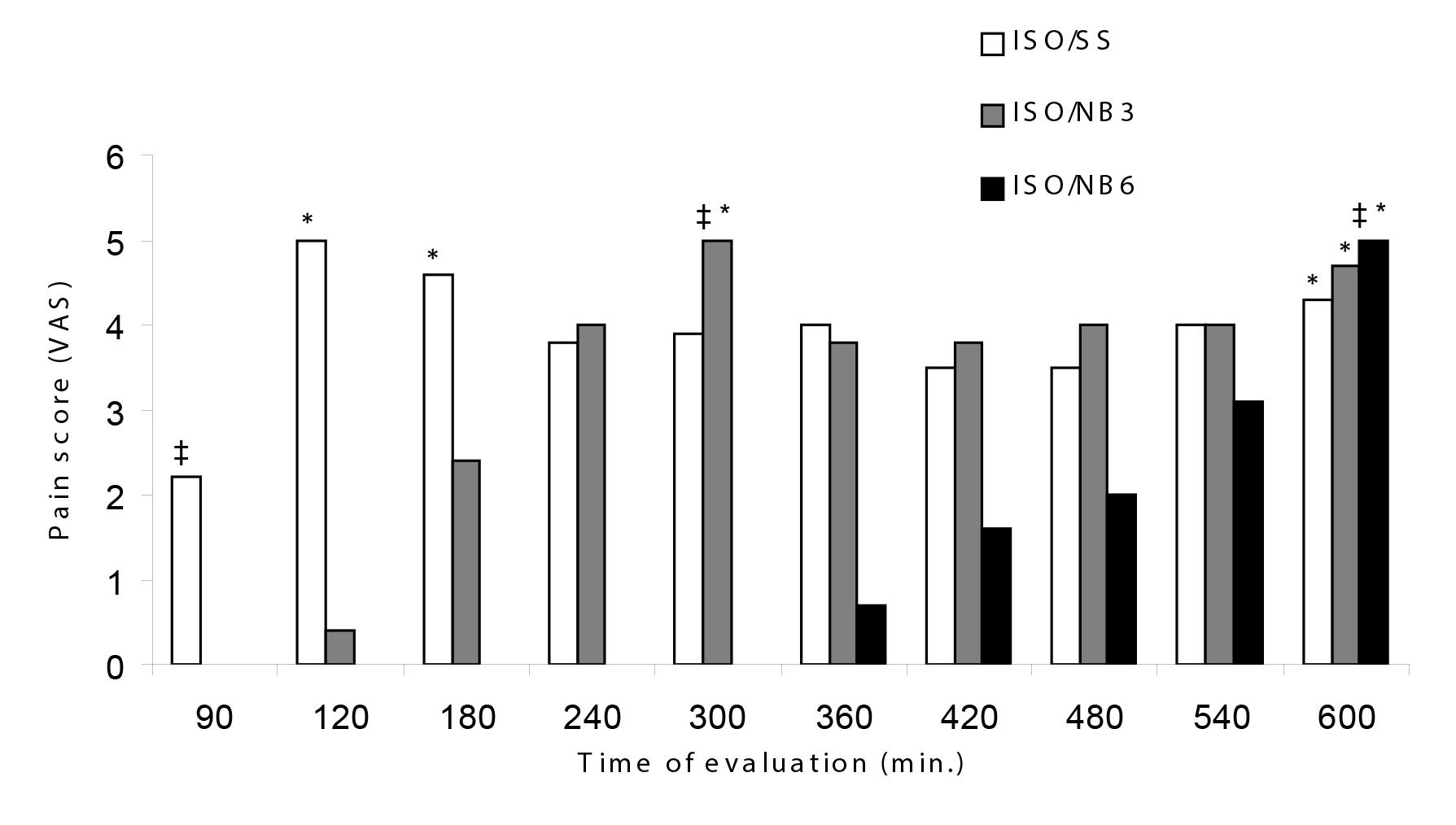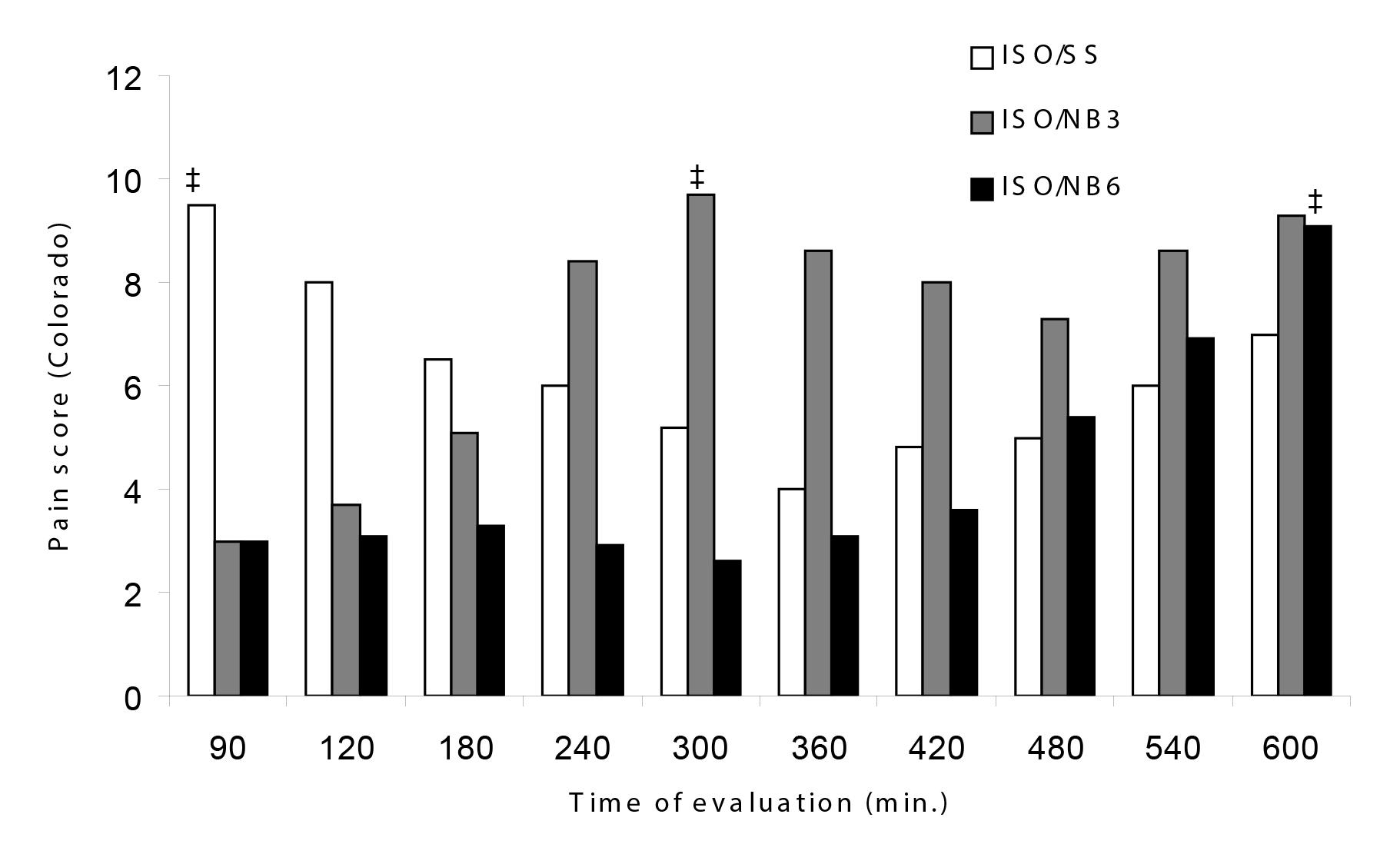PURPOSE:
To measure the change in the minimum alveolar concentration of isoflurane (EtISO) associated with epidural nalbuphine and the postoperative analgesic requirements in dogs after ovariohysterectomy.
METHODS:
Twenty four healthy female dogs were randomly assigned to receive saline or nalbuphine at 0.3 or 0.6 mg/kg (n=8 for each group) administered via lumbosacral epidural catheter introduced cranially into the epidural canal. Changes in heart and respiratory rates and arterial blood pressure during surgery were recorded along with the corresponding EtISO. Immediately after tracheal extubation, analgesia, sedation, heart rate, respiratory rate, and arterial blood pressure were measured at predetermined intervals and every 60 min thereafter until the first rescue analgesic.
RESULTS:
A significant decrease in EtISO was associated with epidural nalbuphine at 0.3 mg/kg (26.3%) and 0.6 mg/kg (38.4%) but not with saline in ovariohysterectomized dogs. In the postoperative period, VAS and Colorado analgesic scores were lower for the dogs that received the higher nalbuphine dose, which only required supplemental analgesia 10 h following its administration, compared with dogs that received the lower dose.
CONCLUSION:
Epidural nalbuphine significantly reduces the intra-operative isoflurane requirement and provides prolonged postoperative analgesia after ovariohysterectomy in dogs.
Anesthesia; Epidural; Nalbuphine; Isoflurane; Dogs



